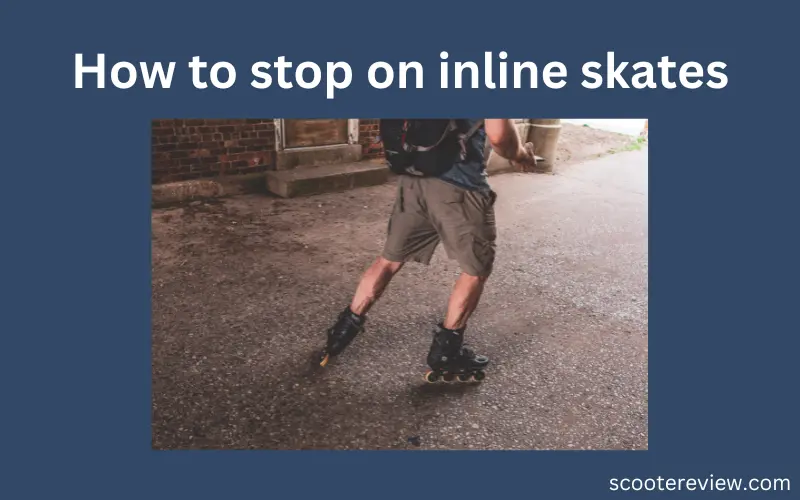Inline skating is a great way to get around, but it’s important to be able to stop safely. If you hit something while you’re skating or need to stop quickly for any reason, being able to stop on your skates is essential.
If you’re a beginner and want to learn how to stop on inline skates, you can try a few different methods. In this blog post, we’ll go over a few of the most common methods for stopping on inline skates.
Let’s get started.

How to stop on inline skates
In this article, we will cover 4 best methods for stopping on inline skates:
- The Heel Brake
- The T-stop
- The plow stop
- Dragging your toe stop
Each method has its own advantages and disadvantages, so it’s important to choose the right one for you. Depending on your skating level, you might find one method easier than the others.
Let’s start with the hockey stop.
The Heel Brake
The heel brake is the most common method for stopping on inline skates. To do a heel brake, simply bend your knees and lean back on your heels. This will put your weight on your heel brakes and help you slow down or stop.
One advantage of the heel brake is that it’s relatively easy to learn. Even if you’re a beginner, you should be able to pick up the heel brake fairly quickly.
The main disadvantage of the heel brake is that it’s not always the most efficient way to stop. If you’re going fast, you might find that your heel brakes don’t have enough stopping power. In this case, you might want to try a different method.
If you try to do a heel brake while going too fast, you might also lose control and fall. So, if you’re going fast, be careful when using the heel brake.
The T-stop
The T-stop is another common method for stopping on inline skates. To do a T-stop, simply extend one leg out to the side, and use that leg to stop yourself.
One advantage of the T-stop is that it’s very efficient. The T-stop can help you slow down if you’re going fast.
The main disadvantage of the T-stop is that it can be difficult to learn. If you’re a beginner, you might find the T-stop hard to master. It can also be easy to lose your balance when you’re doing a T-stop.
If you’re going fast and need to stop quickly, the T-stop can be a great option. Just be careful, and make sure you practice before you try it in a real life situation.
The Plow Stop
The plow stop is another common method for stopping on inline skates. To do a plow stop, simply put one foot in front of the other, and use your back foot to stop yourself. This will create a “plow” effect and help you slow down or stop.
One advantage of the plow stop is that it’s relatively easy to learn. If you’re a beginner, you should be able to pick up the plow stop fairly quickly.
The main disadvantage of the plow stop is that it’s not always the most efficient way to stop. If you’re going fast, you might find that your back foot doesn’t have enough stopping power. In this case, you might want to try a different method.
The plow stop can be a great option if you’re going slow or need to make a quick stop. Just be careful when you’re going fast.
Dragging Your Toe Stop
Dragging your toe stop is another common method for stopping on inline skates. To drag your toe stop, simply put your toe down on the ground, and use that to stop yourself.
One advantage of dragging your toe stop is that it’s very efficient. If you’re going fast, dragging your toe stop can help you slow down quickly.
The main disadvantage of dragging your toe stop is that it can be difficult to learn. If you’re a beginner, you might find that dragging your toe stop is hard to master. It can also be easy to lose your balance when dragging your toe.
If you’re looking for roller skates must check our guide on the best roller skates.
Additional Tips
If you’re having trouble stopping, there are a few additional things you can try.
- First, make sure you’re using the right skating technique. It will be harder to stop if you’re not using the proper technique.
- Second, try different methods until you find one that works best for you. Everyone is different, so what works for one person might not work for another.
- Wear all the safety gear, including helmet, elbow, and knee pads.
- And finally, practice, practice, practice! The more you skate, the better you’ll get at stopping.
Conclusion
There are a variety of different ways to stop on inline skates. The best way to find out what works best for you is to experiment and find a method you’re comfortable with. Just remember to be careful and always wear safety gear. Happy skating!